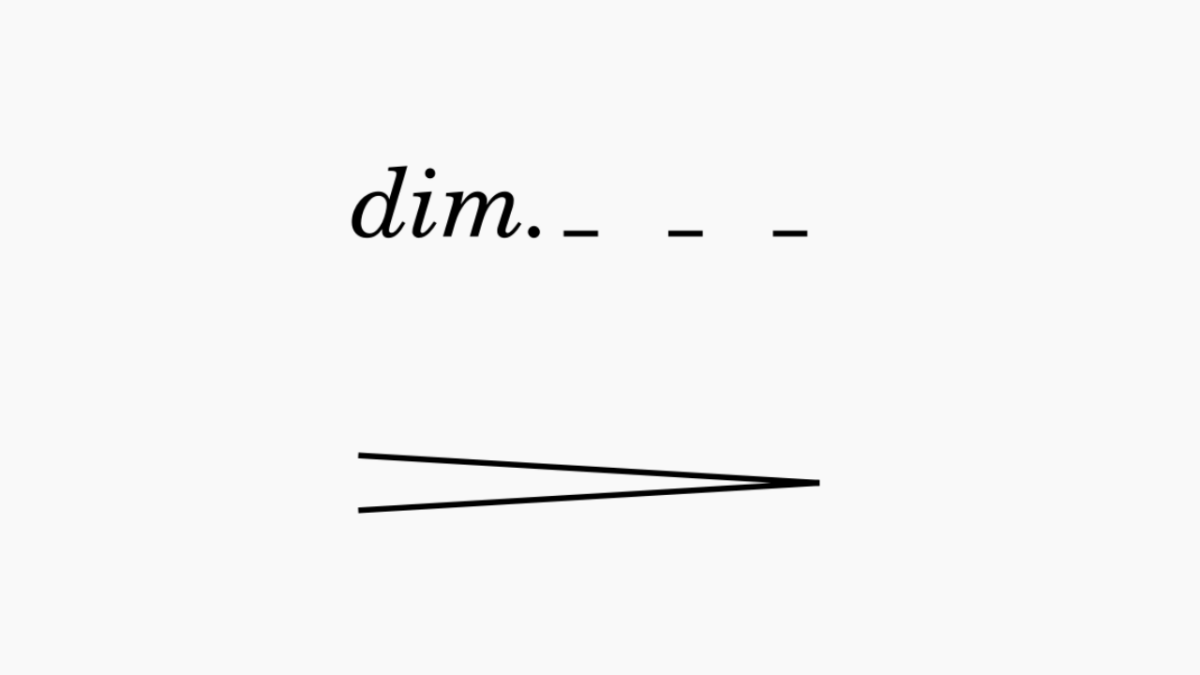When reading piano sheet music, you may come across the symbols “dim.” or “decrescendo.” These are musical symbols that indicate gradually decreasing volume.
This article provides a detailed explanation on how to read “dim.” (diminendo) and “decrescendo” in sheet music.
dim. (Diminendo) / decrescendo
-decrescendo(デクレッシェンド)-1024x181.png)
Both symbols mean “gradually decreasing volume.”
- dim. (abbreviation of dimin.): A symbol derived from “diminish” (to decrease).
- decrescendo: A symbol derived from “decrease” (to diminish).
Both have the same meaning, but the symbols may be used differently in some sheet music.
Notation Variations
The following notations can be seen in sheet music:
- dim. or dimin.
- decrescendo (sometimes written without abbreviation)
- > (The opening direction indicates crescendo, and the closing direction indicates decrescendo)
Recommended Article
How to Play dim. / decrescendo on the Piano

1. Gradually Decrease the Volume
It is important to change the dynamics smoothly. By pressing the keys lightly, the sound will naturally fade away.
2. Adjust Your Touch
As you decrease the volume, gradually soften your touch on the keys. By relaxing your fingers as you play, you can express a natural diminuendo.
3. Use of Wrists and Arms
Control the volume by minimizing the movement of your wrists and arms. Especially when playing chords, it is essential to maintain balance while reducing the sound.
Effects of Expressing dim. / decrescendo
Adding Depth to the Music
Using dim. appropriately adds emotional depth to the music. It is an essential technique to emphasize quiet moments and lingering notes in the piece.
Engaging the Audience
Gradually decreasing the volume creates a sense of silence and anticipation for the next phrase.
Summary
dim. (Diminendo) and decrescendo are symbols indicating gradual decrease in volume, essential for piano expression.
To make your performance more captivating, master the use of dim. and decrescendo!

